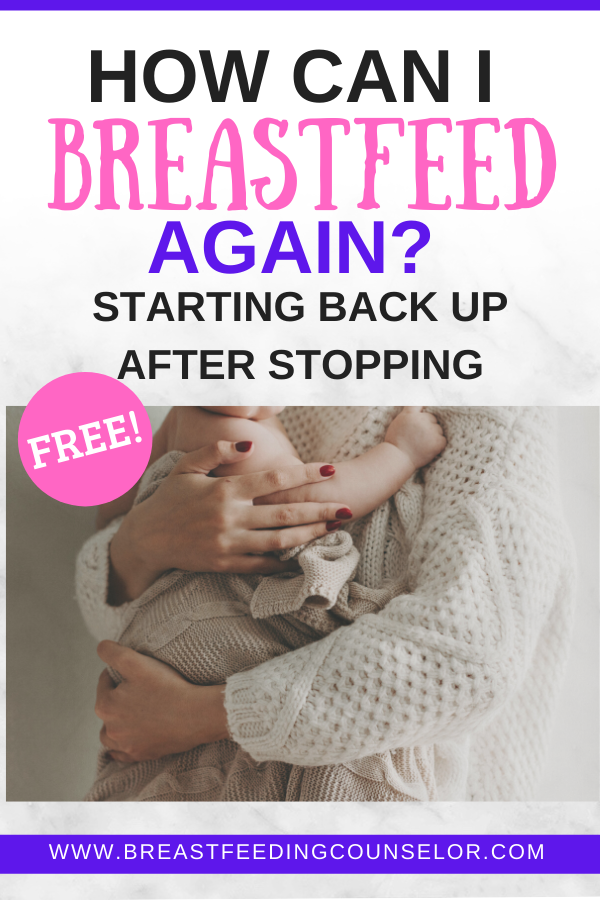Some mothers decide after weaning their babies, they would like to try and breastfeed again. Other times a non-birthing mother is seeking to support baby’s needs of breast milk by inducing lactation. Whether you have breastfed before, or this is your first time, induced lactation or relactation is possible with motivation and time.
Why induce lactation?
In times of health crisis (like we are in now with COVID-19 Pandemic) and emergencies, the use of breast milk substitutes may be challenging due to shortages or dangerous due to unsafe water.
Breast milk is the best nutrition for a baby and should be exclusively fed whenever possible to infants for their first 6 months of life. Beyond 6 months and up to 12 months breast milk should be the primary source of nutrition. Beyond 12 months breast milk is still recommended until baby is ready to wean.

Who can induce lactation?
Relactation is possible for those who have breastfed in the past or even those who have never breastfed before.
It is certainly easier for a caregiver who has breastfed recently to be able to relactate, but most women who have breastfed before can relactate no matter what age.
Adoptive mothers or non-birthing mothers can also induce lactation with just stimulation, but sometimes drugs for hormones or milk production may be necessary.
Age of the baby
If a baby is 6 months of age or younger, there will be a greater likelihood that they will take to the breast.
What to do
Baby Suckling at the breast
Baby should be offered both breasts regularly throughout the day. The aim is for 8-12, see below for more info.
Frequent milk removals
The more you can stimulate-and eventually remove from the breast, the more milk you will produce. Ideally, you should aim for 8-12 milk removals per 24-hour time frame. 20-30-minute durations are ideal. If baby wants to suckle longer or more often, this should be allowed and encouraged.
Skin to Skin (kangaroo care)
Skin to skin holding as often as possible is encouraged. Undress baby down to a diaper. Caregiver should have bare chest and place baby tummy to tummy. This can be helpful to create a bond between the caregiver and baby. Skin to skin also helps babies with body temperature regulation, and other bodily and neurological development.
Hand expression or double-electric pump
Hand expression can be quite successful when done correctly. Watch this video on how to hand express. If you have access to a double-electric pump, then that can also be used for breast stimulation. Baby latching should always be the first option, but if baby refuses this will help.
Using a Supplemental Nursing System
These systems are great to give baby supplementation while at the breast and stimulating. There is a feeding cup, attached to a feeding tube. The tube goes into the corner of the mouth and provides satisfaction for the baby while stimulating the breasts.
Types:
Lact-aid– Deluxe system for long-term use
If a supplemental nurser is not used, expressed milk, donor milk, or breast milk substitute can be used on the nipple to encourage baby to suck.
Avoid using artificial nipples
Discourage use of pacifiers during relactation. All suck satisfaction should be met at the breast. Artificial nipples, such as on bottles can also discourage latching onto breast, so they should not be used.
Cup feeding and syringe feeding are great ways to prevent the use of artificial nipples.
How to tell if relactation is successful
Breasts may feel full and possibly leak
Audible swallowing heard when infant is latched on and actively suckling at breast
Baby gaining weight with less supplementation of breast milk substitutes used
Baby stooling changes: less odor and a softer liquid stool
Seeking professional support
If you need individual care, please seek the help of a lactation professional. Please note that more than one session will likely be necessary for adequate follow up in a relactation situation.
Breastfeedingcounselor.com offers in-person (local to the Dallas, TX area) and virtual lactation support for many breastfeeding issues including relactation and induced lactation.
Sources:
https://www.who.int/nutrition/publications/emergencies/ife_module2/en/
Wambach K, Riordan J. Breastfeeding and Human Lactation, 5th ed. Boston and London: Jones and Bartlett, 2015.



Recent Comments